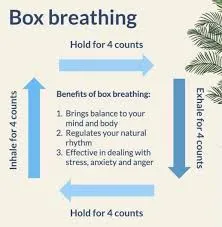
How to Build a Sustainable Fitness Routine
Creating a fitness routine that you can stick to in the long term can feel daunting, but with a few simple strategies, you can build a routine that keeps you motivated, energized, and continually moving toward your goals. In this article, we’ll explore how to build a sustainable fitness routine that fits your life, keeps you inspired, and brings ongoing physical and mental health benefits.
Understanding the Importance of Sustainability in Fitness
When you start a new workout plan, it’s tempting to dive in with intensity. However, rapid results often come at the cost of long-term adherence. High-intensity routines or restrictive diets might work for a few weeks, but they’re challenging to maintain over months or years. A sustainable fitness routine, on the other hand, prioritizes consistency over intensity, aiming for steady progress that aligns with your lifestyle.
A sustainable approach also minimizes the risk of burnout and injuries, which are common with overly ambitious or aggressive programs. By building a plan that works for you, you can develop a routine that becomes a part of your life rather than a short-term challenge.
Setting Realistic and Meaningful Goals
The foundation of a sustainable fitness routine starts with setting achievable and meaningful goals. Rather than focusing solely on weight loss or physical appearance, consider goals that emphasize health, strength, energy, and mental well-being. Here’s how to set realistic goals:
- Start Small: Begin with goals that feel manageable and are not overwhelming. For instance, if you’re new to fitness, start with a goal of working out twice a week rather than jumping into a six-day routine.
- Be Specific: Instead of vague goals like “get fit,” try something concrete like “be able to jog for 30 minutes” or “lift a specific weight.” This specificity makes progress easier to track.
- Focus on Performance Over Aesthetics: Goals like building strength, improving flexibility, or increasing endurance are more sustainable than focusing only on appearance.
- Adapt Your Goals Over Time: As you progress, adjust your goals to reflect your current abilities and interests.
Crafting a Balanced Workout Plan
A sustainable fitness routine includes a mix of activities that target different areas of fitness, including cardiovascular health, strength, flexibility, and balance. Here are the key components of a well-rounded workout plan:
- Cardio Exercises: Include moderate cardio exercises like brisk walking, jogging, or cycling 2-3 times a week. These boost heart health, improve endurance, and burn calories.
- Strength Training: Incorporate strength training exercises, such as weightlifting or bodyweight exercises, at least twice a week. Strength training helps to build muscle, improve bone density, and increase metabolism.
- Flexibility and Mobility Work: Activities like yoga, Pilates, or simple stretching improve flexibility, prevent injuries, and enhance muscle recovery. Aim for at least one session a week focused on flexibility.
- Rest and Recovery Days: It’s crucial to allow your body to recover. Schedule at least one or two rest days per week. Rest days prevent burnout, reduce injury risk, and aid in muscle recovery and growth.
Finding Activities You Enjoy
One of the most common reasons people abandon their fitness routines is that they don’t genuinely enjoy the activities they’re doing. Finding workouts that you look forward to is key to maintaining consistency. Here’s how to find exercises you love:
- Experiment with Different Workouts: Try various types of exercise, from dancing and swimming to boxing or hiking, to discover what brings you joy.
- Incorporate Social Elements: Working out with a friend or joining a fitness class can make exercise more enjoyable. A social element provides accountability and a sense of community.
- Mix It Up: Variety can prevent boredom and make your routine more exciting. Rotate through different activities or styles of training, such as high-intensity interval training (HIIT), weightlifting, and yoga.
Creating a Flexible Schedule
Your schedule might vary from week to week due to work, family, or other commitments, so flexibility is essential. A rigid workout plan can be hard to stick to, but a flexible routine lets you adapt your workouts to fit into your life more seamlessly. Here’s how to create a flexible workout schedule:
- Plan Around Your Energy Levels: Work out when you feel most energized, whether it’s in the morning, during lunch, or in the evening.
- Adjust Intensity as Needed: If you’re tired or feeling sore, do a lighter workout or focus on stretching rather than pushing through a high-intensity session.
- Be Open to Short Workouts: Even a 10- or 15-minute workout can be effective. On busy days, aim for a quick workout rather than skipping it entirely.
Tracking Your Progress
Tracking progress is a great way to stay motivated and see the benefits of your hard work. However, sustainable tracking methods are just as important as sustainable workouts. Here are some ways to track your progress:
- Use a Journal or App: Write down your workouts and reflect on how you feel after each session. Fitness apps can also help you track your stats over time.
- Celebrate Small Wins: Recognize and celebrate every milestone, no matter how small. Improvements in strength, endurance, or flexibility are all worth celebrating.
- Focus on Non-Scale Victories: Rather than obsessing over weight, pay attention to how your clothes fit, how much energy you have, and your overall mood. These victories are more sustainable and often more fulfilling.
Listening to Your Body and Avoiding Burnout
A sustainable fitness routine is rooted in mindfulness and listening to your body’s cues. Overtraining or ignoring signs of fatigue can lead to injuries and setbacks. Here’s how to avoid burnout:
- Take Rest Days Seriously: Allow your muscles time to recover and rebuild. Rest days are just as important as workout days.
- Pay Attention to Pain and Discomfort: If you experience any pain, especially sharp or unusual pain, it’s essential to rest and assess whether you might need medical attention.
- Practice Self-Compassion: Understand that there will be days when you’re not motivated, and that’s okay. Skip a workout if you need to, and avoid guilt or self-criticism.
Making Fitness a Part of Your Lifestyle
A sustainable fitness routine isn’t just about time spent in the gym; it’s about embracing an active lifestyle. Here are a few ways to incorporate fitness into your daily life:
- Find Opportunities for Movement: Incorporate physical activity into your routine with simple actions like taking the stairs, walking during phone calls, or stretching while watching TV.
- Prioritize Sleep and Nutrition: Both sleep and balanced nutrition play a vital role in recovery, energy, and motivation for exercise. Aim for 7-8 hours of sleep and choose nutritious foods that fuel your workouts and daily activities.
- Practice Mindfulness and Stress Management: Stress can significantly impact your motivation to work out. Mindfulness practices, such as meditation or deep breathing, can help you manage stress and maintain a positive outlook on fitness.
The Benefits of a Sustainable Fitness Routine
Building a sustainable fitness routine offers numerous benefits that go beyond physical fitness. Here are some lasting advantages:
- Improved Mental Health: Regular exercise has been shown to reduce stress, anxiety, and symptoms of depression. A sustainable routine keeps these mental health benefits consistent over time.
- Enhanced Physical Health: Sustainable exercise routines support cardiovascular health, muscle strength, bone density, and overall physical resilience.
- Greater Self-Efficacy: A consistent fitness routine builds self-discipline and self-confidence, reinforcing the belief that you can set and achieve meaningful goals.
Conclusion
Building a sustainable fitness routine is a journey that requires patience, adaptability, and self-compassion. By setting realistic goals, finding enjoyable activities, staying flexible, and listening to your body, you can create a routine that becomes a lasting part of your lifestyle. The key to success lies in embracing a fitness routine that aligns with your values, fits into your life, and continuously brings you joy, strength, and fulfillment.



